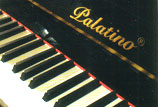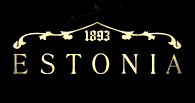The Kawai Technicians Academy – Schools that taught the art of piano tuning, regulation and voicing
These additions helped the company tremendously over the years...and decades, solidifying its position as an important ambassador to Japan and as a global player in musical instruments. For decades, Kawai would be the second largest musical instrument manufacturer in the world (behind Yamaha) who unlike Kawai, built almost every musical instrument.
Then in 1980 Shigeru designed a state-of-the-art grand piano factory in Ryuyo, Japan, which included the industry's first Research & Development department. With this new department, he wanted to question everything because he felt his competitors’ building processes were ingrown. This new R&D and philosophy helped produce Kawai's exclusive carbon jack and Kawai's synthetic action parts that have been proven to be superior (both in performance and longevity) to wood – parts that are used in all Kawai pianos today, including the Shigeru Kawai EX concert grand.
During the robust 1980's, Shigeru Kawai made additional and unusual investments. He told his wood buyers to buy special soundboard wood whenever it became available – wood that Kawai would store, age and later use on special pianos. He also wanted to assemble a special set of technicians who would have extra training and laboratory apprenticeship. Kawai actually loaned these technicians to European rebuilders to learn the ways of the traditional European piano manufacturers that were the performance leaders in the industry.
The most successful of these special technicians eventually would become a Kawai MPA (Master Piano Artisan) – akin to the exclusivity and difficulty of becoming a Master Sommelier. And while there are 129 Master Sommeliers currently in North America, there are only a few dozen MPA's at the Kawai piano factory and only one in North America (who happens to be Director of Field Services for Shigeru Kawai).
So throughout the 1990's the staff of MPA's was being created and unique soundboard material was being gathered and aged. All of this set the stage for Shigeru Kawai's crowning glory in 2000: The birth of the Shigeru Kawai piano.
Introducing the Shigeru Kawai Piano
After being partially responsible for the popularity of western music in Japan...after creating the substructures for the growth of the piano’s popularity and the network of piano technicians...after setting up exportation and dealers around the world...and after creating a factory with a research department that made important and exclusive changes to the instrument, Mr. Shigeru Kawai set out to build a very special line of pianos that would be his legacy and crowning glory.
Shigeru wanted to take the standard Kawai grand piano – already a praised instrument – and cross-pollinate it with some of the performance features of European pianos along with the enhancements that were borne out of Kawai's R&D. These pianos would be called Shigeru Kawai pianos.
Shigeru Kawai pianos are indeed very unique.
How are they different from Kawai's GX series?
For decades, there has been a certain peace of mind pianists have when it comes to the standard Kawai pianos. They are built with precision automation and technology that makes them incredibly reliable and familiar. There are no surprises in tone or touch and Kawai's are known to require less maintenance than completely hand-built pianos that are double or triple the price. But hand-built pianos in general tend to have a little more charm and musical character. This comes however at a much higher sale price and a much greater cost of ownership.
So what if Kawai could take the design, technology and durability of a standard Kawai piano and make it perform better – and be even more musical? This is where Kawai has "hand carved" themselves a distinct place in the premier piano market with the Shigeru Kawai piano. Mr. Shigeru Kawai wanted to take Kawai's existing grand piano line and all of the technology that made Kawai the Lexus of pianos, then bring the character & musicality of this new line of pianos to unprecedented heights. So here's what is different about the Shigeru Kawai from the Kawai GX grand pianos:
Rim Material – It's different. Kawai won't say what it is because it's a blend of hardwoods, the recipe for which they consider very confidential. Think Coca Cola formula-level secrecy. Be assured, it is different from the GX rim material and it's more expensive. This new rim provides unique enhanced tone, sustain and musicality.
Beam Material – The beams are made of spruce (as opposed to laminated hardwoods) and are hand-fitted as opposed to being cut to the specifications of the rim. Since spruce is the material used in soundboards due to its resonant qualities, so these support beams now play a role in the piano's tone like never before.
Soundboards – In the above "Shigeru Kawai History" section, you can read more about the unique, aged, high-grade soundboard material used in Shigeru Kawai pianos. Additionally, the soundboards in production pianos are tapered by a machine. But since each piece of wood is different, no machine can adjust for the slight tonality differences that each soundboard produces. Kawai's MPA's can literally knock on the bare soundboard and use their ear to gauge the sound, further tapering the board by hand beyond what the computerized specifications called for. This is a very important distinction in the musicality of a Shigeru Kawai piano.
Bridge Construction – The bridge material is the same as the GX series but it is fitted by hand because plate castings have slight differences from the casting process. MPA's hand trim the bridges section by section to match the plate in a way that no machine can. Also, the bridge caps of the SK-5, SK-6, SK-7 and EX use Boxwood caps in the treble sections. This is an extremely hard and expensive wood that is difficult to work with, but is very helpful to the treble tone.
Bass Strings – The bass strings are hand-spun in the R&D department by special winding machines. In production pianos, machines wind bass strings tight in the interest of consistent reliability, but it's no secret that bass strings can sound better if a skilled technician hand-winds them slightly looser in order to enable more flex in the string, creating a deeper tone. Each MPA has to carefully listen for the optimal tone, however, because if the windings are too loose, they have a tendency to buzz. There is a delicate balance at hand here that only an MPA can discern.
Hammer Felts – The hammer felts are very special and frankly secretive, but we do know that the hammers on Shigeru Kawai pianos are made at the factory using an Australian wool that has a longer fiber. The hammers are hand-pressed with no heat which takes 6-8 hours instead of the 15 minutes it takes to press a standard set of hammers. Technicians seem to know the difference immediately and have reported that they enjoy voicing these hammers even more than the standard hammers. What pianists notice is an even wider dynamic range and "tone colors", as pianists say.
Action Weighting – The actions of all Shigeru Kawai grand pianos are weighted by hand. After the action is regulated and played-in by the playing machines (special machines that play them longer than the standard production pianos), MPA's finish off the key weighting.
Advanced Pedal System – The damper action in the Shigeru Kawai pianos has a modified design that allows smoother control of the dampers when half-pedaling, a technique used by advanced pianists. This refined design may be subtle or even undetectable by many pianists, but to a highly skilled player it is almost immediately noticeable.
Thicker Finish – Honestly, a thicker Kawai finish is almost overkill because if there's one thing that is almost impossible to criticize on a Kawai piano, it's the finish. But all Shigeru Kawai pianos receive an extra layer of polyester finish. If you've ever seen a 40-year-old standard Kawai polished ebony grand piano it probably looks like new – or can easily be buffed to look like new again. The same can't be said for other brands, especially those like Steinway, which use a much thinner lacquer finish.

And even on the Steinway pianos that are polyester (shiny black), the finish is contracted out to a company in New Jersey, and it doesn't have the same perfect appearance as seen on Kawai pianos. Polyester finishes are just not easy. It requires an investment of millions of dollars in machinery and R&D to do a world-class job producing those glass-like finishes.
"Handmade sounds great...but whose hands?"
With all the above talk of work done by hand, this is a great time to remind readers that all the above work is performed by Kawai's elite Master Piano Artisans, as described in the "Shigeru Kawai History" section at the top of this page. This is also a good time to question the quality of the labor involved with other "handmade" pianos. It would be easy to argue that even Kawai's standard production pianos are crafted to be more precise than "handmade" pianos in which apprenticing labor is at "hand" (pun intended).
The Big Picture
The above features are not necessarily reasons to buy a Shigeru Kawai piano. They're the reasons to try the Shigeru Kawai piano. Because at the end of the day (quite literally), the piano has to speak to YOU. The experience playing a Shigeru Kawai is why people wish to own them. That's why area colleges like Wheaton College, North Central College and Elmhurst College, to name a few, have been adding Shigeru Kawai pianos to their stages.
The most gratifying moment for us at Cordogan's is when a high-level pianist begins to play a Shigeru Kawai after they've indicated their mind was made up to buy something else. Then the moment hits them... They've had it wrong and they don't know what to do with all of their preconceived notions. That's when it honestly turns to fun for everyone surrounding the piano! :)
Today, only 250 Shigeru pianos are crafted each year. This is not limited by the demand; rather is is limited by the number of Kawai MPA's and the availability of the aged spruce.
Kawai is also so serious about these pianos that each owner will receive a visit from a Japanese MPA in their home within the first 1-2 years of ownership. This visit will include a complete inspection of the piano, any tuning / voicing / regulation needed, and can take a half of a day or more.
If you are fortunate enough to be in the market for a premier piano, the Shigeru Kawai is certainly one to audition. Cordogan's is the only authorized Shigeru Kawai dealer in the Chicagoland area and our 7% sales tax is by far the lowest of all the area counties – which is a huge savings on a large purchase. Please contact us at 630-584-5000 for more information about our current inventory of Shigeru Kawai grand pianos.












